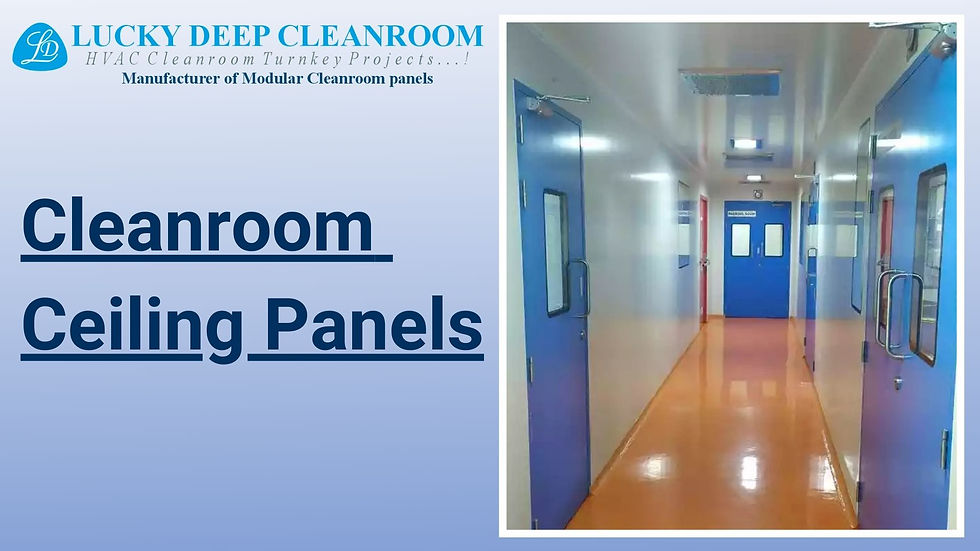How to Choose the Right Clean Room Door for Your Facility
- Lucky Deep
- Feb 9
- 2 min read

Understanding Clean Room Doors
Clean room doors are specially designed to ensure airtight sealing, prevent contamination, and maintain optimal environmental conditions. These doors are built with durable materials and come with various features to enhance performance and security.
Key Features of Clean Room Doors
Construction and Material
Double skin doors with or without view panels.
Constructed with the same material as modular panels and assembled with a door profile.
Made of GPSP GI Sheet (0.8 mm thick) with a frame of 1.2 mm thick for standard doors.
Fire-rated doors feature a GPSP GI Sheet (1.2 mm thick) with a frame of 1.6 mm thick.
Shutter and Finish
Available in thicknesses of 42 mm, 44 mm, and 46 mm.
Coated with powder paint or stainless steel finish.
Powder coating thickness ranges between 60-80 microns for enhanced durability.
Size Variations
Frame thickness options: 50 mm, 80 mm, 100 mm, and 150 mm.
Width options: 750 mm, 900 mm, 1000 mm, 1200 mm, 1500 mm, 1800 mm, 2000 mm, and 2200 mm.
Door Accessories
Hinges: 3-4 stainless steel hinges per door.
Handles: Stainless steel ‘D’ type handles on the pull side (20 mm dia., 300 mm long).
Push Plate: Stainless steel push plate (125 x 300 mm).
Door Closure: Dorma make door closure with standard arm (TS-68).
Locking Mechanism: Both-side key-operated locking arrangement.
Bottom Seal: Automatic door bottom seal for enhanced insulation.
View Panel: 6 mm thick safety glass for visibility and security.
Emergency Features: Panic bar for emergency exit doors.
Double Door Enhancements: Flush tower bolt and stainless steel kick plate (300 mm height).
Door Interlocking Provision: Ensures controlled access and contamination prevention.
Filler Material Options
PUF: 40±2 kg/m³
PIR: 48±2 kg/m³
ROCKWOOL: 96±2 kg/m³
How to Select the Right Clean Room Door?
When choosing a clean room door for your facility, consider the following factors:
Application Needs: Ensure the door aligns with your clean room classification and regulatory requirements.
Material Selection: Opt for GPSP GI Sheet or stainless steel based on durability and fire resistance requirements.
Sealing & Insulation: Choose doors with effective bottom seals and high-density filler materials.
Safety & Security Features: Look for emergency exit mechanisms, locking systems, and visibility panels.
Customization Options: Select the appropriate size, thickness, and additional features that suit your facility.
Conclusion
The right clean room doors enhance the efficiency and safety of your controlled environment. By understanding their construction, accessories, and functional features, you can ensure that your clean room remains contamination-free while maintaining the highest industry standards. Choose wisely based on your facility’s specific needs to maximize performance and longevity.




Comments